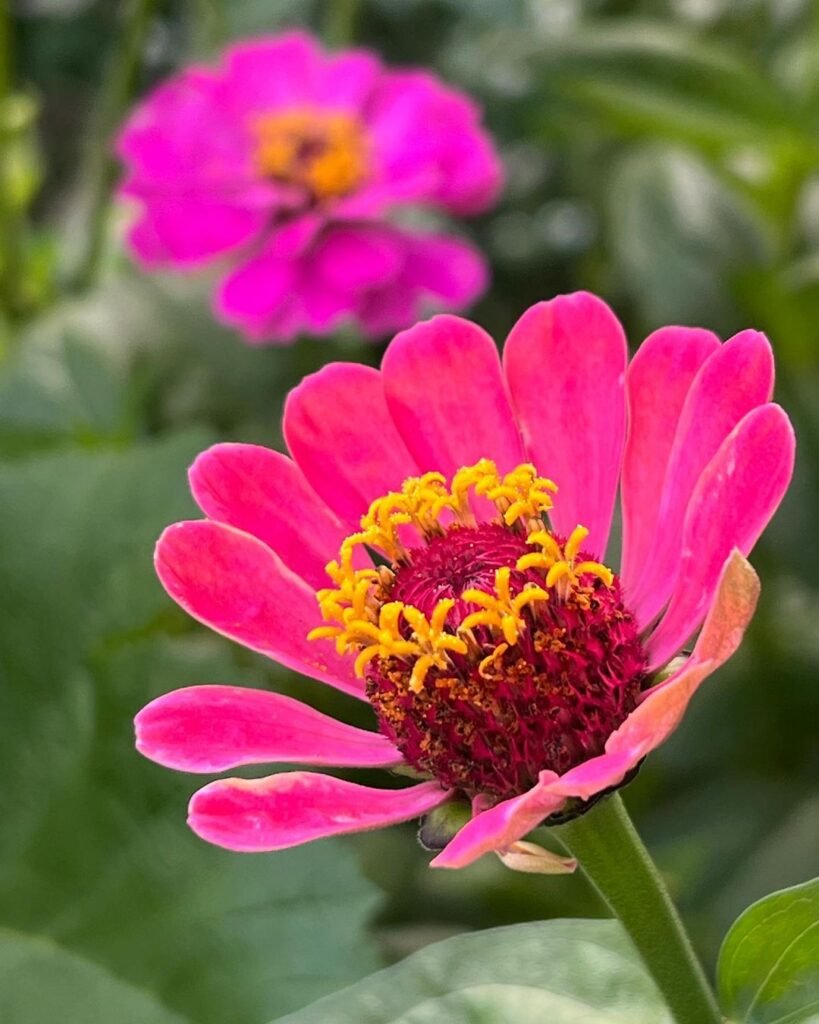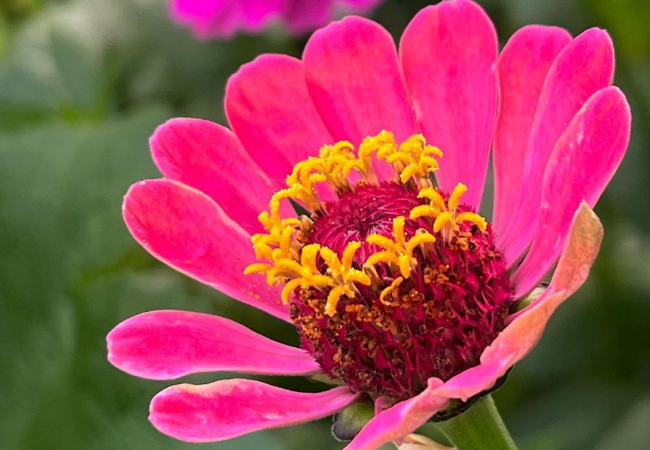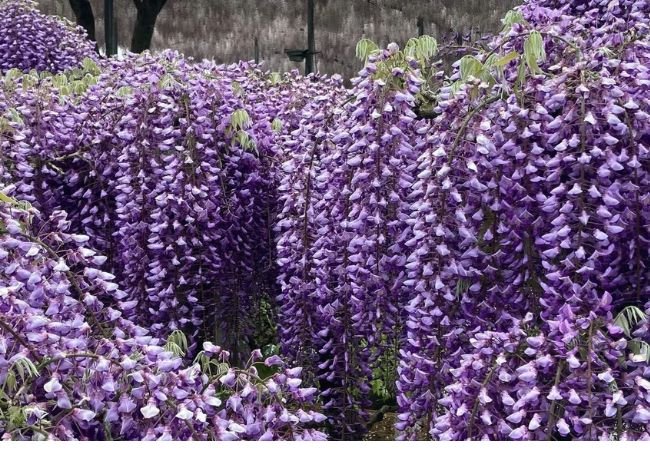Learn how to grow zinnia flowers with this step-by-step guide. Discover varieties, care tips, and answers to common questions from a gardener with 10 years of experience.
Hi there! I’m Ashley Scott, and I’ve been gardening for over 10 years. One flower that’s always had a special place in my garden (and my heart) is the zinnia flower. I still remember the first time I saw one bloom—it was like a burst of sunshine, with bold colors popping against the green leaves. Since then, zinnias have been a summer must-have for me. Whether you’re new to gardening or a seasoned pro, this guide will walk you through everything you need to know about zinnia flowers, from planting to cutting them for your table.
In this article, I’ll cover why zinnias are so great, the different types you can grow, how to plant and care for them, and even some personal tips I’ve picked up along the way. Let’s dive into the colorful world of zinnia flowers!
Here’s an information chart for Zinnias:
| Category | Information |
|---|---|
| Botanical Name | Zinnia spp. |
| Common Name | Zinnia |
| Plant Type | Annual |
| Hardiness Zone | Zones 3-10, depending on species |
| Sun Exposure | Full sun |
| Soil Type | Well-draining, fertile |
| Watering | Moderate |
| Growth Habit | Upright, bushy |
| Height/Spread | 6 inches to 4 feet tall, spreads 6-18 inches |
| Special Features | Large, colorful flowers in various shapes and sizes, attracts butterflies and bees, excellent cut flowers |
Why Choose Zinnias for Your Garden?

So, why should you grow zinnia flowers? Honestly, they’re one of the easiest and most rewarding flowers out there. Here’s what makes them special:
- Super Easy to Grow: Even if you’re just starting out, zinnias won’t give you a hard time. They’re tough and forgiving.
- Blooms That Last: Zinnia flowers bloom from early summer right up to the first frost—months of color!
- Pollinator Magnets: Bees, butterflies, and hummingbirds love them, turning your garden into a buzzing hotspot.
- So Many Options: With tons of colors, sizes, and shapes, there’s a zinnia for every vibe.
- Perfect for Cutting: Bring that garden beauty indoors with zinnias—they’re awesome in vases.
I’ve grown them in scorching Texas summers and cooler Midwest springs, and they always deliver. Ready to add some flowers zinnia magic to your yard? Let’s keep going.
Types and Varieties of Zinnias
Zinnias come in all sorts of stunning varieties. Here are some of my favorites, perfect for any US garden:
- Zinnia elegans: These are the showstoppers with big, bold blooms. ‘State Fair Mix’ gives you a rainbow of colors, while ‘Oklahoma Series’ offers smaller, tidy flowers great for bouquets.
- Zinnia angustifolia: Also called narrow-leaf zinnias, these are compact with smaller blooms. Try ‘Crystal White’ for a clean look or ‘Star Orange’ for a pop of warmth.
- Zinnia haageana: Think daisy-like flowers with a vintage feel. ‘Persian Carpet’ is a mix of reds, yellows, and oranges—perfect for borders.
- Zinnia marylandica: A hybrid with tough, disease-resistant plants. The ‘Zahara’ series is my go-to for low-maintenance beauty.
Each type has its own personality. I love mixing Zinnia elegans with Zinnia angustifolia for a layered look in my beds. Pick ones that match your garden’s style—big and bold or small and sweet.
Growing Zinnias: A Step-by-Step Guide
Growing zinnia flowers is a breeze if you follow a few simple steps. Here’s how I do it, based on years of trial and error across different climates.
When to Plant Zinnias
Timing is key for zinnias. They’re warm-season lovers, so wait until after the last frost in spring. In most US regions, that’s late April to early June. Want blooms sooner? Start seeds indoors 4-6 weeks before the last frost, then move them outside. I’ve found direct sowing works best for me—less fuss!
Soil Preparation
Zinnias aren’t picky, but they do best in well-draining soil with a pH of 5.5 to 7.5. I mix in some compost or aged manure before planting—it gives them a nutrient boost and keeps the soil loose. If your soil’s heavy clay, add sand or organic matter to improve drainage.
Planting Seeds or Seedlings
For seeds, sow them 1/4 inch deep and space them 6-12 inches apart (check your variety—taller zinnias need more room). Water gently to keep the soil moist. If you’re transplanting seedlings, set them at the same depth they were in their pots. Last year, I spaced mine too close, and they fought for sunlight—lesson learned!
Sunlight and Watering Needs
Zinnias crave sunshine—give them at least 6-8 hours of direct light daily. Water them regularly, keeping the soil evenly moist but not soggy. I aim for about an inch a week, more if it’s hot and dry. Tip: Water at the base, not overhead, to avoid leaf issues.
Fertilizing Zinnias
They don’t need much, but a little fertilizer helps. I use a balanced, water-soluble kind (like 10-10-10) every 4-6 weeks. Too much nitrogen, though, and you’ll get tons of leaves but fewer zinnia flowers—I’ve been there!
How long for zinnias to germinate? Seeds usually sprout in 5-7 days if the soil’s warm (70-75°F). How long does it take zinnias to bloom? From planting to flowers, expect 60-70 days—faster with indoor starts.
For more planting tips, check out my guide on starting a flower garden over at USA Garden Hub.
Caring for Your Zinnias
Once your zinnias are growing, a little care goes a long way. Here’s what I do to keep them happy.
Pruning and Deadheading for More Blooms
Deadheading is my secret to endless zinnia flowers. Pinch off faded blooms just above a leaf set—it tells the plant to make more. I also trim back leggy stems to keep things bushy. Last summer, I skipped deadheading for a week, and the blooms slowed way down—don’t make my mistake!
Dealing with Pests and Diseases
Zinnias are pretty tough, but watch for powdery mildew (white spots on leaves) or aphids (tiny green bugs). For mildew, space plants well and skip overhead watering—I learned that from Clemson Extension. Aphids? A strong water spray or insecticidal soap does the trick.
Harvesting Zinnia Flowers
Love fresh bouquets? Zinnias are perfect for cutting. Here’s how to do it right.
When and How to Cut Zinnias
How to cut zinnia flowers? I cut in the morning when they’re perky, using sharp scissors. Snip just above a leaf node—it encourages more blooms. Last year, I cut a bunch for a friend’s party, and my plants kept flowering like crazy.
Using Zinnias in Arrangements
Zinnias have sturdy stems and last about a week in a vase. I mix them with sunflowers or cosmos for a summery vibe. Add a splash of water and a pinch of flower food—they’ll stay vibrant longer.
For more cutting ideas, see my post on best flowers for bouquets at USA Garden Hub.
Common Questions About Zinnias
Got questions? I’ve got answers based on my decade of growing zinnias.
Are Zinnias Annuals or Perennials?
Are zinnias annuals or perennials? In most places, zinnias are annuals—they grow, bloom, and die in one season. In warm spots like southern California, they might self-seed and pop up again, acting a bit like perennials. Are zinnias a perennial? Not really, unless you’re in a frost-free zone.
How Long Does It Take for Zinnias to Bloom?
When do zinnia flowers bloom? From seed, they take 60-70 days to flower. Plant in May, and you’ll see blooms by July. Deadheading keeps them going into fall.
How Long for Zinnias to Germinate?
How long for zinnias to germinate? About 5-7 days in warm soil. I’ve had them sprout faster indoors with a heat mat—pretty cool to watch!
For more details, check out Cornell’s gardening resources.
My Personal Experience with Zinnias
After 10 years, zinnias still surprise me. One summer, I planted ‘State Fair Mix’ along my walkway—reds, pinks, yellows everywhere. Butterflies swarmed it, and my neighbors couldn’t stop complimenting it. Another fave is the ‘Profusion’ series—compact, tough, and perfect for pots.
My top tip? Succession planting. Sow seeds every 2-3 weeks for non-stop zinnia flowers. I messed up once by planting all at once—blooms faded by August. Now, I stagger them and enjoy flowers till October.
Conclusion
Zinnia flowers are a gardener’s dream—easy, colorful, and endlessly cheerful. Whether you want a vibrant border, a pollinator haven, or fresh-cut blooms, zinnias deliver. With this guide, you’ve got all you need to grow your own.
So, grab some seeds and give zinnias a shot—I promise you won’t regret it. Happy gardening!







3 Comments on “Zinnia Flowers: Your Complete Guide to Growing and Caring for These Vibrant Blooms”